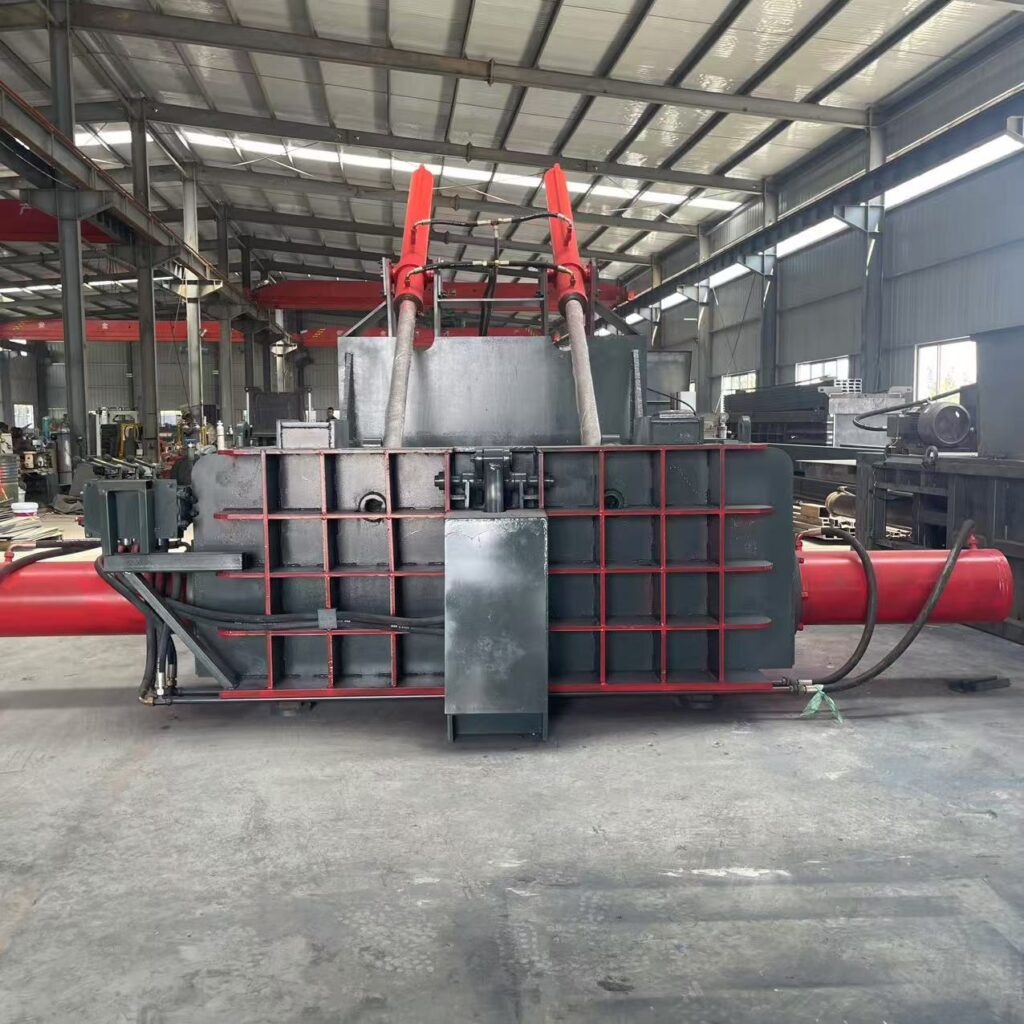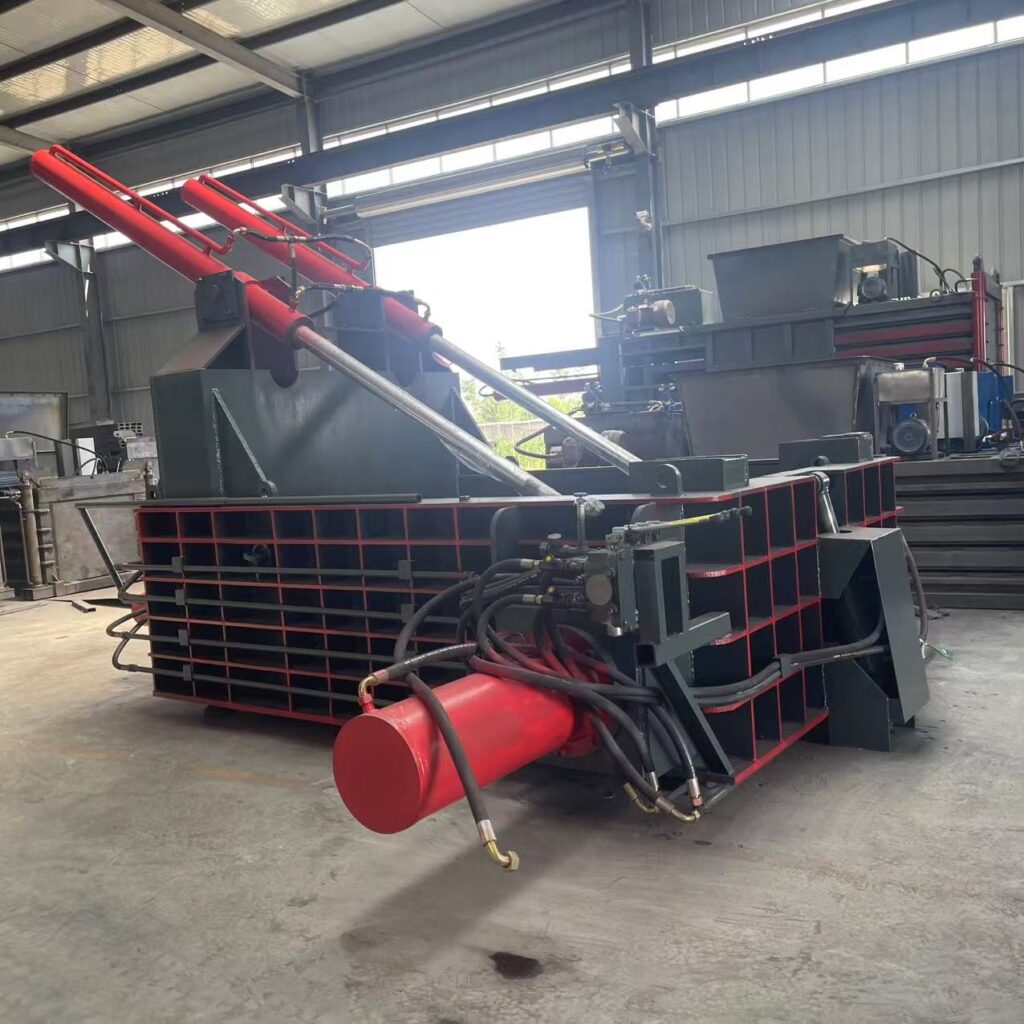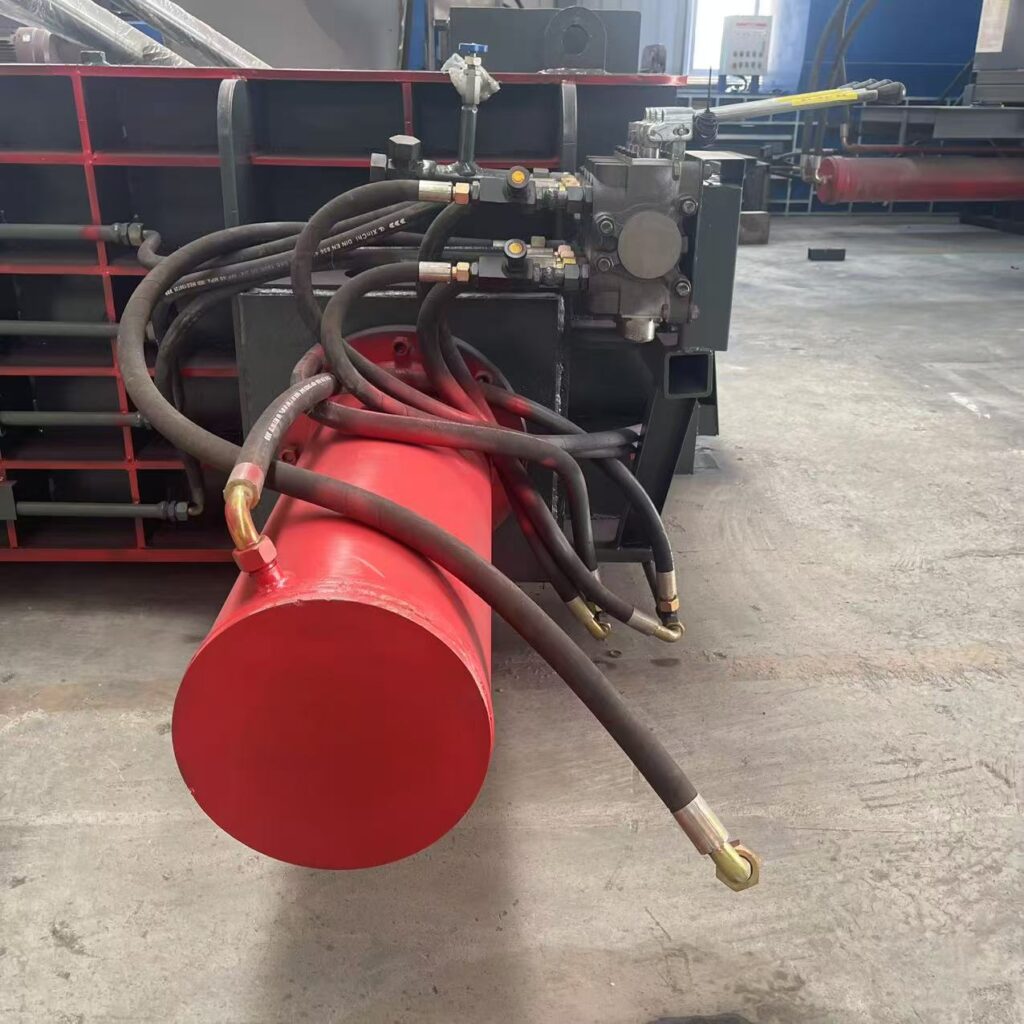Introduction To Horizontal Metal Baler Machines
In the modern recycling and scrap processing industry, efficiency and compact storage of materials are critical. A horizontal metal baler machine is one of the most widely used machines for compacting and bundling scrap metals into uniform bales. This powerful hydraulic equipment can handle a wide range of ferrous and non-ferrous metals, including steel, aluminum, copper, and other metal scraps. By compressing loose materials into dense blocks, it not only reduces storage and transportation costs but also makes recycling easier and more profitable.
This article will explain in detail what a horizontal metal baler machine is, why it is important for businesses, and how to operate it effectively.
What Is A Horizontal Metal Baler Machine?

A horizontal metal baler machine is heavy-duty hydraulic equipment designed to compress and pack loose scrap metals into dense rectangular or square-shaped bales. Unlike vertical balers, which compress materials from top to bottom, horizontal balers apply pressure from the sides. This structure allows the machine to handle larger volumes of scrap metals and achieve higher processing capacity.
The machine consists of several key components:
-
Hydraulic System: Provides the compressing power.
-
Feeding Conveyor Or Hopper: Transfers loose metals into the compression chamber.
-
Compression Chamber: Where the metals are compacted.
-
Control Panel: For operating and adjusting machine functions.
-
Output Door Or Discharge System: Releases the finished metal bales.
Horizontal metal balers are widely used in recycling centers, scrap yards, steel plants, and metal processing industries.
Why Horizontal Metal Baler Machines Are Important

1. Space Saving
Scrap metals in their original form are often bulky and take up significant space. A baler compresses them into dense bales that reduce storage needs by up to 80%.
2. Cost Efficiency
Transportation becomes more economical when metal scraps are compacted into uniform blocks. Trucks and containers can carry more weight with less empty space, lowering logistics costs.
3. Recycling Benefits
Baled scrap is easier to handle and feed into furnaces during recycling. This increases efficiency and improves the quality of the recycled metal.
4. Environmental Contribution
By enabling the recycling of metals, balers help reduce landfill waste, minimize energy consumption in production, and support sustainable industrial development.
5. Profitability
Scrap metal dealers can sell compacted bales at a higher price because they are standardized, easy to transport, and preferred by smelting companies.
How Horizontal Metal Balers Work

The working principle of a horizontal metal baler is straightforward yet powerful.
-
Feeding The Machine
Scrap metals are loaded into the feeding hopper, either manually, with a crane, or via an automatic conveyor system. -
Compression Process
Once inside the chamber, hydraulic cylinders push metal against heavy-duty walls, compressing it into a dense block. The pressure applied can reach hundreds of tons, depending on the model. -
Binding Or Strapping
Some balers include an automatic strapping system that binds the compacted bale with steel wires to maintain its shape. -
Bale Ejection
The compressed bale is ejected through the discharge door, ready for storage or transport.
This cycle can be repeated continuously, making horizontal balers suitable for high-volume operations.
Types Of Horizontal Metal Balers
1. Fully Automatic Balers
These are designed for large-scale operations, featuring automatic feeding, compression, strapping, and bale ejection. They offer the highest efficiency and minimal manual labor.
2. Semi-Automatic Balers
These machines require manual feeding and bale tying but still provide powerful compression and efficient performance. They are ideal for medium-scale operations.
3. Closed-Door Balers
Equipped with a closed compression chamber, these machines ensure maximum density of the bales.
4. Open-End Balers
These balers allow continuous feeding and faster processing, suitable for lighter scrap metals.
Applications Of Horizontal Metal Balers
Horizontal metal balers are versatile and widely applied across industries:
-
Scrap Yards: For handling steel, aluminum, and copper scraps.
-
Steel Mills: To prepare raw material for smelting.
-
Automotive Industry: For recycling car bodies, engine blocks, and aluminum parts.
-
Manufacturing Plants: To recycle leftover metal sheets, wires, and turnings.
-
Recycling Centers: To process both ferrous and non-ferrous metals.
How To Use A Horizontal Metal Baler Machine
Operating a horizontal metal baler requires training and adherence to safety guidelines. Below are the essential steps:
Step 1: Preparation
-
Ensure the machine is installed on a solid, level foundation.
-
Check the hydraulic oil level and system pressure.
-
Inspect blades, cylinders, and other moving parts for wear or damage.
Step 2: Feeding Materials
-
Load scrap metals into the hopper manually or via conveyor.
-
Avoid feeding oversized or unprocessable materials such as flammable items or sealed containers.
Step 3: Operating The Machine
-
Use the control panel to start the compression cycle.
-
Monitor the pressure and ensure materials are compacting evenly.
-
For semi-automatic machines, manually tie the bale with steel wires.
Step 4: Ejecting The Bale
-
Activate the ejection system to push the finished bale out.
-
Store the bales in a dry area to prevent rusting.
Step 5: Routine Maintenance
-
Regularly check hydraulic fluid, seals, and hoses.
-
Clean the feeding chamber and remove debris.
-
Schedule periodic professional maintenance.
Safety Considerations
Operating a horizontal metal baler involves high hydraulic pressure and heavy machinery. Safety is essential:
-
Always wear protective gear, including gloves, helmets, and steel-toe boots.
-
Never reach into the chamber while the machine is running.
-
Keep untrained personnel away from the working area.
-
Perform routine checks to avoid hydraulic leaks and system failures.
Key Factors To Consider When Choosing A Horizontal Metal Baler
-
Processing Capacity – How many tons of scrap can the machine handle per hour?
-
Bale Size And Density – Does the output meet your transportation or furnace requirements?
-
Automation Level – Choose between fully automatic or semi-automatic based on labor availability.
-
Power Supply – Ensure compatibility with your local electrical standards.
-
Durability – Look for machines with wear-resistant materials and reliable hydraulic systems.
-
After-Sales Service – Consider suppliers offering installation, training, and spare parts support.
Benefits For Businesses
Investing in a horizontal metal baler brings both immediate and long-term benefits:
-
Higher scrap value due to standardized bales.
-
Reduced storage space and costs.
-
Lower transportation expenses.
-
Improved workplace safety and cleanliness.
-
Enhanced reputation for sustainability.
Conclusion
The horizontal metal baler machine is a vital solution for industries dealing with scrap metals. It transforms bulky, loose materials into compact, manageable bales that are easier to store, transport, and recycle. From scrap yards to steel mills, this equipment plays a central role in waste reduction and resource recovery.
By understanding what it is, why it matters, and how to use it safely, businesses can maximize efficiency, profitability, and sustainability. Whether you run a recycling center or a manufacturing plant, a horizontal metal baler is a long-term investment that ensures smooth operations and environmental responsibility.
